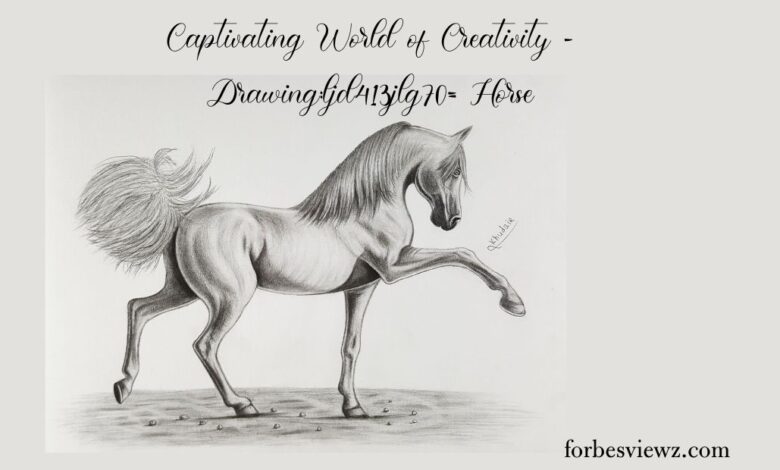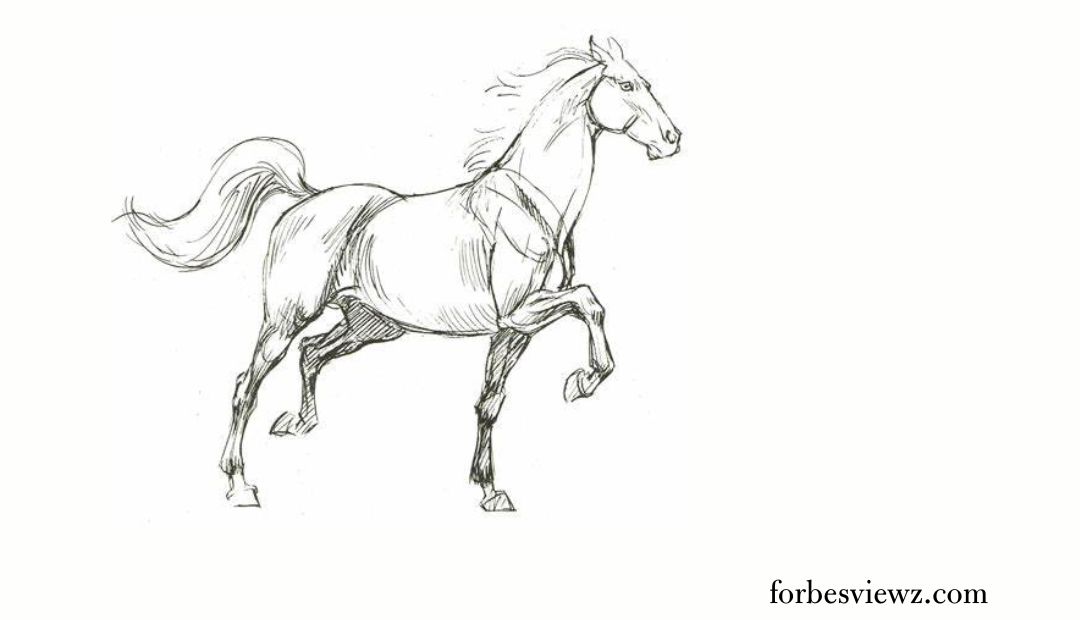Drawing:ljd413jlg70= Horse – Captivating World of Creativity

Discover an engaging world of creativity when drawing:ljd413jlg70= horse, where the magic of equine art lives on. From selecting materials to mastering proportions and adding realism, this guide gives all you need to start creating masterpieces yourself.
BMW’s logo symbolizes its legacy of innovation and excellence, captivating audiences while inspiring change. This design element can hold audiences spellbound for long.
Drawing:ljd413jlg70= horse-Artist’s Technique and Style
Drawing is a form of artistic expression that allows individuals to convey personal identity and foster creative development. Additionally, drawing allows individuals to express themselves by developing personal interpretations of any given subject matter. Though drawing can be challenging at times, its rewards make the journey worth your while – whether using H and B graphite pencils on smooth paper for accurate drawings without smudging.
Artists attempting to draw horses must carefully consider its anatomy and movement in order to create an accurate depiction that highlights its beauty and grace. Furthermore, when creating their piece it should reflect their personal style as much as possible.
Inspiration Behind the Artwork
The horse has long been revered and revered as an artistic subject. Artists have captured its strength and beauty through paintings and sculptures that depict its elegance and power – often representing freedom, nature’s strength and beauty in one piece of artwork. drawing:ljd413jlg70= horse
The Tail is an integral component of equine artwork, as it plays a pivotal role in its anatomy. Understanding its function will enable you to create stunning and realistic depictions of your favorite horses. drawing:ljd413jlg70= horse
Petals are an integral component of floral artwork and offer an exceptional opportunity to highlight nature’s beauty. Learn how to draw petals for designs with more elegance. drawing:ljd413jlg70= horse
Emotional Impact on Viewers
Artists aim to capture both the power and grace of horses when drawing them, which requires close observation and understanding of its anatomy. This goal can be especially challenging when drawing them from life; often the animal may fidget until it has settled enough for an artist to begin sketching or taking reference photos from a safe distance. drawing:ljd413jlg70= horse
Understanding perspective is also important, which involves using parallel lines that converge at a vanishing point to enhance depth perception in drawings and increase visual appeal. This technique creates an illusion of depth while adding visual interest.
Artwork that is both beautiful and evocative captivates its viewers by encouraging an emotional response, transcending mere representation. Drawing is known to reduce stress while improving overall mental well-being – this makes the art of horse drawing an excellent way to find personal wellbeing.

Significance of Horses in Art drawing:ljd413jlg70= horse
Horses have played many roles in art throughout history. They serve as symbols of strength and speed while conveying nobility and devotion, often being employed by warriors, cavalry officers and other influential people in battle and cavalry operations. Horses also frequently appear as subjects in religious art pieces and remain popular subjects among artists. drawing:ljd413jlg70= horse
Many of the first artworks depicting horses can be found in prehistoric cave paintings like those at Lascaux. These images of herds in the wild demonstrate human fascination with these magnificent animals even before writing was invented. drawing:ljd413jlg70= horse
As early as the 17th century, artists began depicting horses as solo subjects. English artist Alfred Munnings excelled at depicting horses in action – his paintings captured that tension-filled moment before an animal burst forth into a runaway gallop.
Historical Context of Equine Art
Humans have always appreciated the nobility and strength of horses. There is evidence of their fascination in prehistoric cave paintings at Lascaux in Europe as well as Asia; more refined images showing greater knowledge of equine anatomy were seen in ancient Egyptian, Greek, and Roman art – even royalty and nobles commissioned equestrian portraits and statues as symbols of their power and authority.
The Romantic Period of the 1800s saw great change for horse art as artists moved away from strict rules and rational thinking associated with Enlightenment to express nature’s raw energy and man’s unbridled spirit. drawing:ljd413jlg70= horse
Techniques Used in Horse Drawing
Horse drawing is an engaging art form that marries technical skill with an appreciation of these majestic animals. Drawing horses requires an in-depth knowledge of anatomy as well as an ability to capture both their powerful spirit and graceful beauty in drawings. drawing:ljd413jlg70= horse
Artists use various line techniques when creating their artworks, from fluid strokes to precise contours. Furthermore, shading techniques help bring their creations to life while giving viewers an intimate experience with horses’ unbridled spirit and noble grace. The results offer them something truly remarkable to look at.
Choosing the Right Materials
When it comes to drawing horses, selecting the appropriate materials is paramount for beginners. When starting out, medium-weight paper that can withstand lots of erasing without tearing is ideal; pencils that feel comfortable in your hand and can create fine lines are also key; finally, an eraser with no visible smudges or damage should do just fine – one made out of white plastic would work wonders here.
Start by drawing a simple outline of a horse head using smooth, even lines. Add details, such as eyes and ears, to give your sketch depth and realism. Finally, use your pencil to create texture in its mane – composed of individual hairs that vary in length and direction – as well as lighten some areas while darkening others to bring this animal’s face to life.
Understanding drawing:ljd413jlg70= horse Anatomy
An intimate knowledge of horse anatomy is indispensable to creating lifelike portraits of these majestic animals, and is also key in bodywork practices, enabling practitioners to understand how muscles and bones interact with one another. According to The Equine Institute, knowledge of skeletal anatomy is one of the cornerstones of successful bodywork for horses.
Horse skeletons provide them with physical capacity and athletic potential. Specialized joints and ligaments help horses run quickly and efficiently while their back and neck help protect internal organs such as their heart and lungs from being exposed to harmful conditions. Their tail also serves as temperature regulation as well as being used to fling away biting insects.
Mastering Proportions and Details
Correct proportions are integral to creating an aesthetically pleasing work of art when drawing horses. By employing various eyeballing and measuring techniques, as well as employing useful tools and training the mind for accuracy, artists can master the fundamentals of drawing horses while producing artworks which reflect both its anatomical features and emotional resonance.
Step one in creating accurate proportions when drawing horses is to sketch its head and neck in rough outline form, using head length as an approximate guideline to establish proportions elsewhere on its body.
Adding Realism With Shading drawing:ljd413jlg70= horse
Add depth to your drawing by employing shading techniques like cross-hatching and hatching, as well as employing a consistent lighting source that helps determine where shadows fall. Furthermore, adding details such as eyes and tack can further realism to the piece.
Horse drawing is an engaging art form that combines technical skill with an appreciation of one of nature’s majestic creatures. Not only can horse art enhance visual appeal, it can also serve as an emotional catalyst and expressive medium. No matter your artistic experience level or expertise level, this guide provides everything necessary to draw horses with confidence and precision.
Depicting Horse Movement and Poses drawing:ljd413jlg70= horse
Horses have long been a source of artistic inspiration, serving as powerful symbols of freedom and power. Their graceful movements elicit various emotional reactions ranging from admiration and aspiration to deep attachment and wild spirit – creating artworks featuring these themes requires masterful balance between artistic technique and cultural understanding.
Understanding how to draw horses effectively begins with having an in-depth knowledge of its anatomy. A horse has approximately 205 bones, making up its robust musculoskeletal system for movement and attached by tendons and muscles which give shape and form to each bone.
Adding Details: Mane Tail and Coat Texture
Drawing horses requires an intimate knowledge of their anatomy and movement. Acquiring this understanding enables artists to portray their subjects more accurately and detail. The end product conveys the enduring relationship between humans and horses while embodying their noble grace; simultaneously it evokes feelings of freedom that resonate across cultures.
Step one of creating an accurate horse drawing involves sketching its framework using basic shapes – circles for its head, ovals and rectangles for its body and legs, plus lines representing joints – all serve as effective foundations.
Common Mistakes to Avoid When drawing:ljd413jlg70= horse
Drawing horses well can take months or years. Patience and consistent practice are keys to mastering this art form, while reviewing your work regularly for feedback can also help identify areas for improvement. Celebrating your successes will boost confidence and keep learning going strong.
One of the most frequent mistakes beginners make in drawing horses is failing to draw its neck properly, which is essential to its movement and should be long and muscular. Also common are drawings with straight or rigid legs – horses have natural curves in their legs that should be added for greater realism.
Conclusion
The horse is an extraordinary animal, one that inspires humans through both its beauty and power. They have played an essential part throughout history and their magnificence has been captured in many works of art. One such artwork titled ‘Drawing:Ljd413jlg70= Horse’ offers a captivating study of equine form through sophisticated artistic techniques that transcend mere representation to capture their dynamic essence.




